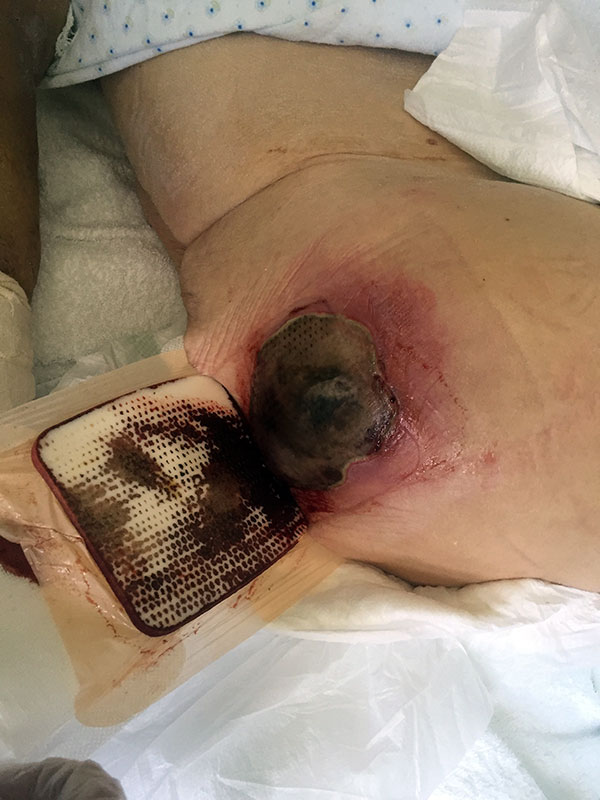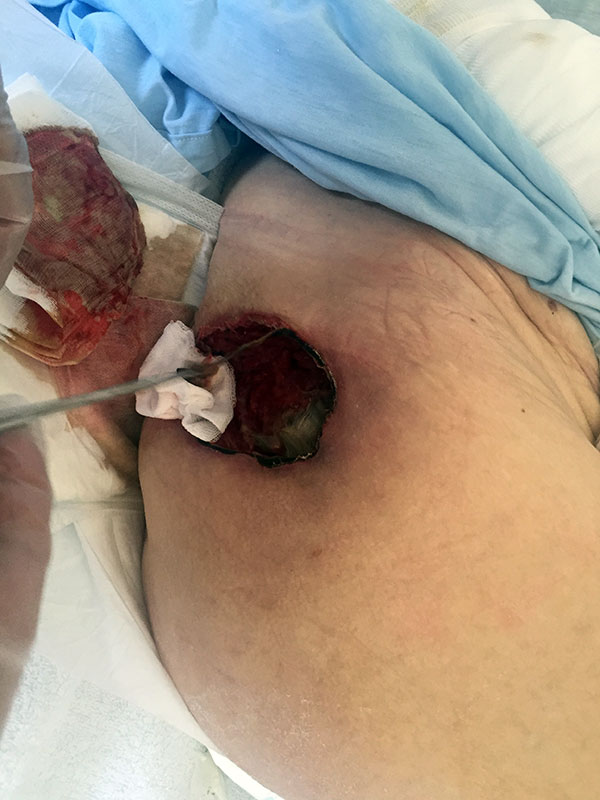The term reclination means the localized destruction of an area of skin or subjacent tissues which is caused by ischemia and necrosis of the soft molecules due to prolonged pressure in the specific area.
The pressure exerted during reclination compresses the blood vessels of the area resulting in a reduction or even disruption of microcirculation which leads to local ischemia, non-removal of metabolic products and poor tissue threpsis. Most ulcers occur in areas of the body beneath which there is a bone (coccyx, trochanters, heels, malleolus).
Groups at high risk for reclinations include elderly patients with reduced mobility, paraplegic or quadriplegic patients, orthopedic patients with fractures of the spine, pelvis or lower extremities and finally patients with coexistent diseases such as diabetes mellitus, cancer or trophopathies.
Depending on the extent of the tissue damage, pressure ulcers are divided into four stages:
STAGE 1. There is erythema of the skin that does not subside despite the removal of pressure. Swelling, pain, local induration and discoloration of the surrounding skin usually coexist.
STAGE 2. Skin lesion of partial thickness that includes only the epidermis or the entire skin. It presents clinically as erosion, blister or ulcer.
STAGE 3. Damage to the overall thickness of the skin with destruction or necrosis of the subcutaneous or adipose tissue.
STAGE 4. Complete destruction of tissues with damage to the subjacent organs (muscles, tendons, bones)
The assessment of a reclination, which is a medical procedure, will help to implement the appropriate treatment to restore the patient's health, avoid complications and improve his quality of life.
Prevention and treatment are based on the following principles:
RESTORATION OF SYSTEMATIC PARAMETERS. Regulation of diabetes mellitus, rehabilitation of electrolyte disorders, treatment of disorders of the respiratory and cardiovascular system.
NUTRITIONAL SUPPORT OF THE PATIENT. Diet rich in proteins, vitamins, trace elements and plenty of fluids.
REDUCTION OF LOCALLY EXERCISED PRESSURE. Rapid mobilization of the patient, if possible, rotation-change of position in the bed at regular intervals, use of air mattress.
PROTECTION OF THE SKIN FROM EXTERNAL FACTORS. Avoid suffusion of the skin with biological fluids (urine) and feces, cleansing the skin with the use of special soaps, liniment with medicinal substances.
LOCAL CARE OF THE ULCER. If the wound shows signs of infection, an antiseptic is used which is rinsed well with saline, then we dry and apply special ointments and pads, depending on the type of ulcer and its location. If there is necrosis, surgical cleaning is required. If there is contamination, antibiotics are given after receiving material for culture.
The patient undergoes frequent medical follow-up to avoid complications or relapses.
 English
English  Ελληνικά
Ελληνικά 

